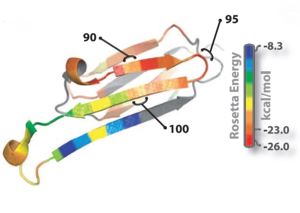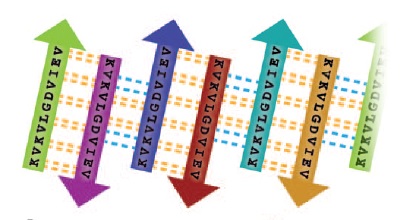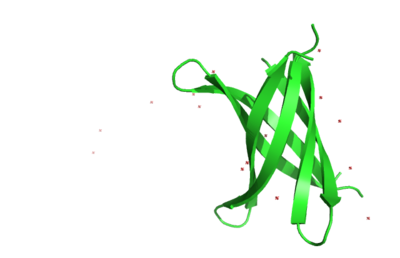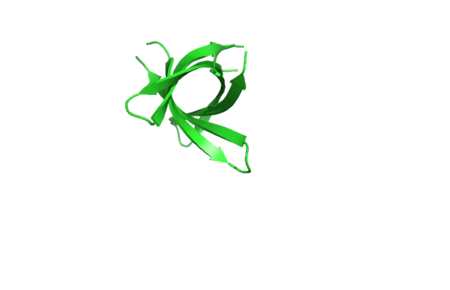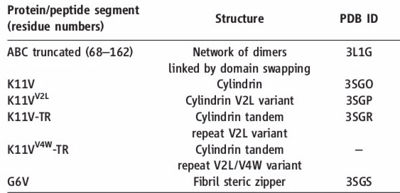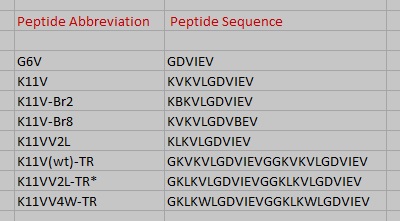Sandbox k11v
From Proteopedia
Toxic Amyloid Small Oligomer’s atomic view
The interactive Molecular Tour below assumes that you are familiar with the journal article[1]. αβ IntroductionAmyloid fibrils were first assumed to be the agents of Amyloid diseases,including Alzheimer’s,Parkinson’s and the prion conditions.But studies from many laboratories suggest that the reason for this disorder are lower molecular weight entities known as small amyloid oligomers,instead of the associated protein fibrils.Segment of amyloid forming protein makes oligomeric complex which exhibits properties of other amyloid oligomers.They are rich in beta-sheet structure and these oligomer can be identified by a conformational antibody(A11) that binds oligomers but not fibrils,irrespective of sequence of constituent protein.This protein is a chaperone that forms amyloid fibrils.The structure of oligomer shows a cylindrical barrel,made up of six anti-parallel protein strands known as cylindrin.This segment(coloured in black) termed as forms the cylindrin structure. Molecular TourOligomer forming segment of ABC(αβ crystallin) were identified by inspection of its 3D structure and by applying the Rosetta-Profile algorithm to its sequence(Fig 1).Two segments of high amyloidogenic propensity,with sequences and (where D indicates Asp; E, Glu; G, Gly; I, Ile; K, Lys; and V, Val).
Amyloid fibrils and oligomer are both formed by the KVKVLGDVIEV.K11V forms fibrils similar to those of protein(ABC) on shaking at elevated temperature and also similar to K11VV2L ().The fibrils diameter range from 20 to 100 nm in electrom microscope.G6V,K11V,K11V-TR are all convertible to amyloid state,as is their parent protein ABC.Segment K11V,K11V-TR,and a sequence variant with Leu replacing Val at position 2( K11VV2L ) are capable of converting to amyloid state as their parent protein ABC and forms stable oligomers intermediate in size between monomer and fiber. ABC K11V oligomers exhibit molecular properties in common with amyloid oligomers from other disease-related proteins and oligomers were observed to be toxic ,displaying dose-response effects similar to those of alpha-beta involved in Alzheimer's disease. K11V and K11VV2L form hexameric oligomers.K11V oligomer is of 6 chains and K11V-TR oligomer of three tandem chains.Other than the glycine linkers and the Val-to-Leu replacement, the cylindrical bodies of the six stranded K11V and the three double stranded K11V-TR oligomers are essentially identical. The structure of K11V is a six-stranded antiparallel barrel of cylindrical in shape also called as cylindrin(Fig. 3 & Fig.4).It is completely different in structure from either the native structure of ABC or from G6V segment.Each strand of cylindrin is bonded to one neighbouring strand by a strong interface and to a second by a weak interface.The weak interface is formed by eight hydrogen bonds: four from the main chain, two mediated through side-chain interactions, and two through a water bridge.The strong interface is formed by 12 hydrogen bonds and spreads outward at the ends.
The structure of K11V-TR was determined, even though glycine linkers and Val-to-Leu replacement,cylindrical bodies of three double stranded K11V-TR oligomers and six-stranded K11V were identical. There are proofs that amyloid oligomers are beta-sheet rich,and many toxic oligomers are recognized by A11 conformational antibody,which also recognizes cylindrin.Threfore, the cylindrin structure may represent amyloid oligomer's common structural core. PDB's of the oligomersPDB'S are K11V (), K11V-Br2 (), K11V-Br8 (), K11VV2L (), K11V-TR (), and GDVIEV ().
| |||||||||||
References
- ↑ Laganowsky A, Liu C, Sawaya MR, Whitelegge JP, Park J, Zhao M, Pensalfini A, Soriaga AB, Landau M, Teng PK, Cascio D, Glabe C, Eisenberg D. Atomic view of a toxic amyloid small oligomer. Science. 2012 Mar 9;335(6073):1228-31. PMID:22403391 doi:10.1126/science.1213151
